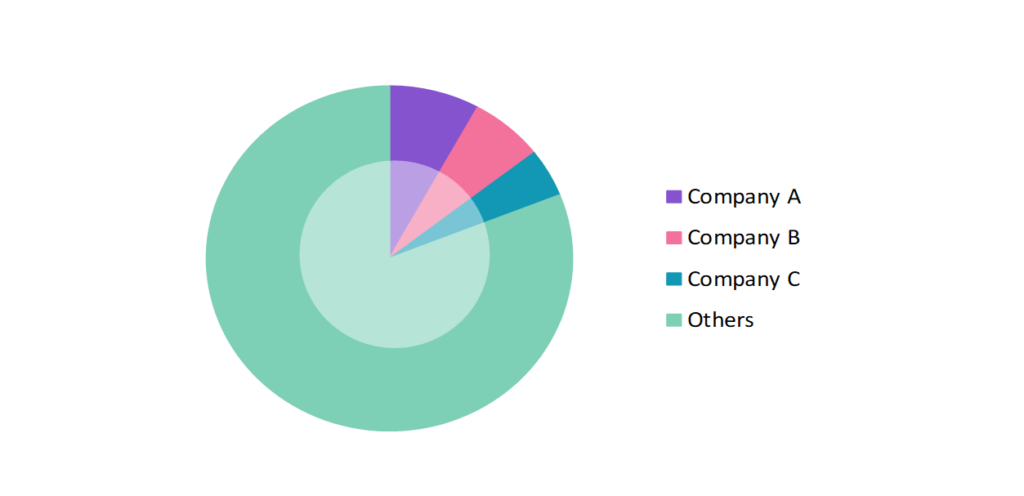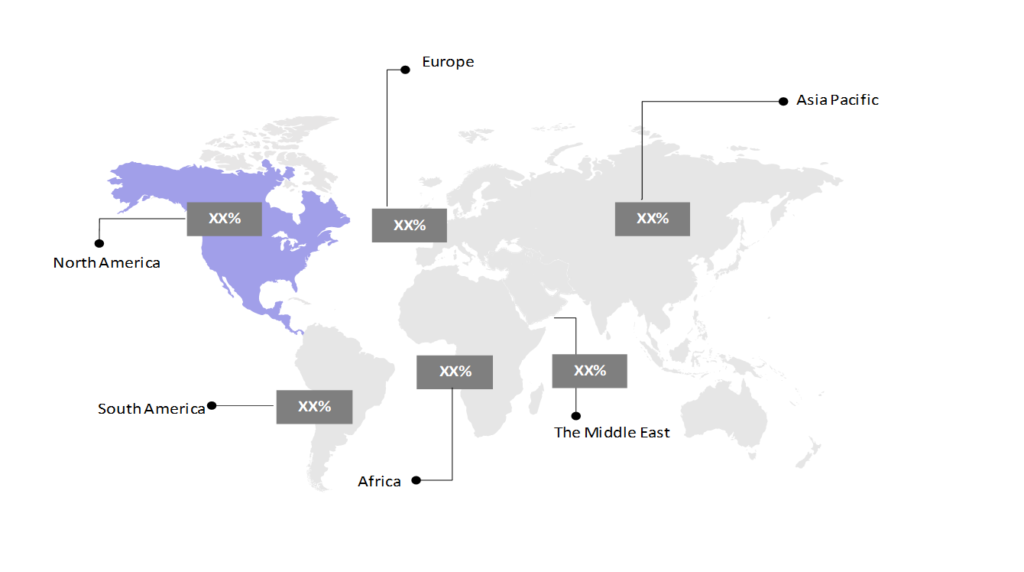Data Center Solutions Market Outlook: Size, Share, Trends & Growth Analysis (2024-2029)
The market report provided a comprehensive analysis segmented by Offering (Hardware, Software, Services); by Data Center Type (Cloud Data Center, Colocation Data Center, Enterprise Data Center, Modular Data Center, Edge Data Center); by Vertical (BFSI, IT & Telecom, Government & Public Sector, Healthcare & Life Sciences, Transportation, Retail, Others); by Geography (North America, South America, Asia Pacific, Europe, The Middle East, Africa).
Outlook

- The data center solutions market is estimated to be at USD 402.74 Bn in 2024 and is anticipated to reach USD 633.14 Bn in 2029.
- The data center solutions market is registering a CAGR of 9.47% during the forecast period 2024-2029.
- The data center solutions market is rapidly expanding, driven by the increasing adoption of cloud computing, artificial intelligence (AI), the Internet of Things (IoT), and big data analytics. Businesses are seeking scalable, flexible, and energy-efficient solutions to manage rising workloads and data growth. The market is also shifting toward edge computing, modular designs, and sustainability-focused innovations. However, high initial investments and operational complexities remain key challenges.
Request a free sample.
Ecosystem

- The participants in the global data center solutions industry are always developing their strategies to preserve a competitive advantage.
- New entrants and regional providers are focusing on niche markets and specialized solutions to compete. The market is marked by rapid technological advancements and intense competition for efficiency, scalability, and cost-effectiveness.
- Several important entities in the data center solutions market include Amazon.com, Inc.; Microsoft Corp.; Alphabet Inc.; Equinix, Inc.; Dell Technologies Inc.; and others.
Ask for customization.
Findings
| Attributes | Values |
|---|---|
| Historical Period | 2018-2022 |
| Base Year | 2023 |
| Forecast Period | 2024-2029 |
| Market Size (2024) | USD 402.74 Bn |
| Market Size (2029) | USD 633.14 Bn |
| Growth Rate | 9.47% CAGR from 2024 to 2029 |
| Key Segments | Offering (Hardware, Software, Services); Data Center Type (Cloud Data Center, Colocation Data Center, Enterprise Data Center, Modular Data Center, Edge Data Center); Vertical (BFSI, IT & Telecom, Government & Public Sector, Healthcare & Life Sciences, Transportation, Retail, Others); Geography (North America, South America, Asia Pacific, Europe, The Middle East, Africa) |
| Key Vendors | Amazon.com, Inc.; Microsoft Corp.; Alphabet Inc.; Equinix, Inc.; Dell Technologies Inc. |
| Key Countries | The US; Canada; Mexico; Brazil; Argentina; Colombia; Chile; China; India; Japan; South Korea; The UK; Germany; Italy; France; Spain; Turkey; UAE; Saudi Arabia; Egypt; South Africa |
| Largest Market | North America |
Get a free quote.
Trends
- Edge Computing Integration: Data centers are embracing edge computing to process data closer to end-users, minimizing latency and enhancing real-time applications like the Internet of Things (IoT), autonomous vehicles, and smart devices. This approach supports faster decision-making and optimized network bandwidth for distributed systems. Amazon Web Services (AWS) and Microsoft Azure have integrated edge computing with services like AWS Wavelength and Azure Edge Zones to process data closer to users.
- Use of Liquid Cooling Systems: Liquid cooling is rapidly replacing air cooling as a more efficient solution for high-density data centers, which enables better heat management, energy conservation, and support for power-hungry applications like artificial intelligence (AI) and big data processing while reducing the overall carbon footprint. Google has implemented liquid cooling systems in its data centers, particularly to support AI workloads such as its Tensor Processing Units (TPUs), which generate significant heat. These systems not only enhance energy efficiency but also help Google reduce its carbon footprint by minimizing the need for traditional air-based cooling systems.
- Increasing Modular Data Centers: The rise of modular data centers allows businesses to deploy and scale infrastructure rapidly. These prefabricated units provide flexibility in expanding capacity, especially in remote or challenging environments, while optimizing energy consumption and ensuring faster delivery timelines. Huawei deployed modular data centers across Africa to provide scalable, quick-to-deploy infrastructure solutions in remote areas. These prefabricated data centers allow businesses to expand their IT capabilities in regions where building traditional data centers would be time-consuming and costly.
Speak to analyst.
Catalysts
- Cloud Computing Revolution: The widespread adoption of cloud computing is driving the demand for scalable and flexible data center solutions. As businesses migrate workloads to the cloud, data centers need to offer robust infrastructure that supports hybrid and multi-cloud environments, which allows seamless integration and agility. Companies like Amazon Web Services (AWS), Google Cloud, and Microsoft Azure are expanding their data centers to meet this rising demand for cloud services.
- Data Explosion and Analytics: The exponential growth of data from sources such as IoT devices, social media, and business operations is fueling the need for advanced data centers. With the explosion of big data, there is a demand for high-performance computing (HPC) and storage solutions capable of handling vast amounts of data. Companies require data centers that can not only store but also analyze data efficiently for insights, driving innovations in storage, networking, and processing capabilities.
- Rapid Growth of AI and ML Workloads: The increasing use of artificial intelligence (AI) and machine learning (ML) applications, such as natural language processing, autonomous vehicles, and personalized recommendations, is putting significant pressure on data center infrastructure. AI/ML workloads require high computational power and specialized hardware like GPUs and TPUs, leading data centers to adopt more advanced technologies for real-time processing and dynamic scaling.
Inquire before buying.
Restraints
- High Initial Investment: Building and upgrading data centers require significant capital outlay for infrastructure, hardware, cooling systems, and power supply. The upfront cost can be prohibitive, especially for small and mid-sized businesses, making it challenging to adopt advanced data center solutions. This high investment often delays expansion or modernization efforts.
- Complexity of Implementation: Integrating new technologies such as edge computing, AI, and multi-cloud environments can be complex and resource intensive. Data centers must ensure seamless interoperability between various systems, software, and networks, which can lead to longer deployment times, potential compatibility issues, and increased operational complexity.
- Scalability and Flexibility Complexities: While data centers need to be scalable and flexible to meet growing demands, ensuring smooth scalability without disruptions is difficult. Balancing resources, optimizing energy consumption, and maintaining operational efficiency as workloads increase or shift between cloud and on-premises environments pose significant challenges for data center operators.
Personalize this research.
Hotspot

Explore purchase options.
Table of Contents
| 1. Introduction 1.1. Research Methodology 1.2. Scope of the Study 2. Market Overview / Executive Summary 2.1. Global Data Center Solutions Market (2018 – 2022) 2.2. Global Data Center Solutions Market (2023 – 2029) 3. Market Segmentation 3.1. Global Data Center Solutions Market by Offering 3.1.1. Hardware 3.1.2. Software 3.1.3. Services 3.2. Global Data Center Solutions Market by Data Center Type 3.2.1. Cloud Data Center 3.2.2. Colocation Data Center 3.2.3. Enterprise Data Center 3.2.4. Modular Data Center 3.2.5. Edge Data Center 3.3. Global Data Center Solutions Market by Vertical 3.3.1. BFSI 3.3.2. IT & Telecom 3.3.3. Government & Public Sector 3.3.4. Healthcare & Life Sciences 3.3.5. Transportation 3.3.6. Retail 3.3.7. Others 4. Regional Segmentation 4.1. North America 4.1.1. The US 4.1.2. Canada 4.1.3. Mexico 4.2. South America 4.2.1. Brazil 4.2.2. Argentina 4.2.3. Colombia 4.2.4. Chile 4.2.5. Rest of South America 4.3. Asia Pacific 4.3.1. China 4.3.2. India 4.3.3. Japan 4.3.4. South Korea 4.3.5. Rest of Asia Pacific 4.4. Europe 4.4.1. The UK 4.4.2. Germany 4.4.3. Italy 4.4.4. France 4.4.5. Spain 4.4.6. Rest of Europe 4.5. The Middle East 4.5.1. Turkey 4.5.2. UAE 4.5.3. Saudi Arabia 4.5.4. Rest of the Middle East 4.6. Africa 4.6.1. Egypt 4.6.2. South Africa 4.6.3. Rest of Africa 5. Value Chain Analysis of the Global Data Centre Solutions Market 6. Porter Five Forces Analysis 6.1. Threats of New Entrants 6.2. Threats of Substitutes 6.3. Bargaining Power of Buyers 6.4. Bargaining Power of Suppliers 6.5. Competition in the Industry 7. Trends, Drivers and Challenges Analysis 7.1. Market Trends 7.1.1. Market Trend 1 7.1.2. Market Trend 2 7.1.3. Market Trend 3 7.2. Market Drivers 7.2.1. Market Driver 1 7.2.2. Market Driver 2 7.2.3. Market Driver 3 7.3. Market Challenges 7.3.1. Market Challenge 1 7.3.2. Market Challenge 2 7.3.3. Market Challenge 3 8. Opportunities Analysis 8.1. Market Opportunity 1 8.2. Market Opportunity 2 8.3. Market Opportunity 3 9. Competitive Landscape 9.1. Amazon.com, Inc. 9.2. Microsoft Corp. 9.3. Alphabet Inc. 9.4. Equinix, Inc. 9.5. Dell Technologies Inc. 9.6. Company 6 9.7. Company 7 9.8. Company 8 9.9. Company 9 9.10. Company 10 |
Know the research methodology.
Data Center Solutions Market – FAQs
1. What is the current size of the data center solutions market?
Ans. In 2024, the data center solutions market size is USD 402.74 Bn.
2. Who are the major vendors in the data center solutions market?
Ans. The major vendors in the data center solutions market are Amazon.com, Inc.; Microsoft Corp.; Alphabet Inc.; Equinix, Inc.; Dell Technologies Inc.
3. Which segments are covered under the data center solutions market segments analysis?
Ans. The data center solutions market report offers in-depth insights into Offering, Data Center Type, Vertical, and Geography.
